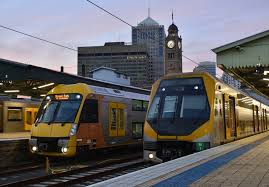CCEA approves 100% Electrification of Railways by 2021-22
Cabinet Committee on Economic Affairs (CCEA) has approved 100% electrification broad gauge routes of Indian Railways (IR) by 2021-22. The 100% electrification will reduce use of imported fossil fuels thereby improve energy security. Reduction in consumption of high speed diesel oil will also result in reduction of GHG emissions, thus, reduce environmental impact of Railways.
Key Facts
CCEA’s decision covers only electrifying remaining 13,675 kilometers (16,540 track kilometers). Currently, around 48% of the country’s 61,680 km broad gauge railway network is electrified. However, this approval does not cover 3,479 km of metre gauge and 2,209 of broad gauge network.
After complete electrification, India will be having second largest electrified railway networks in the world after China, which has 87,000 km electrified network (around 68% of its network) and only large railway with 100 % electrification. The proposed electrification is mainly for missing links and last mile connectivity will increase the operational efficiency, enhance line capacity and improve average speed of trains
Benefits of 100% electrification
Capacity & Speed: It will provide seamless train operation by eliminating detention of trains due to change in traction from diesel to electric and vice versa. It will help Railways in enhancing line capacity due to higher speed & higher haulage capacity of electric locomotives
Safety: It will result in improved signalling system which will lead to enhanced safety in train operation.
Energy Security and Energy bill savings: It will reduce fossil fuel consumption of about 2.83 billion liters per annum. Thus, reduce dependence on imported petroleum based fuels will ensure energy security to the nation. It will help Indian Railways to save Rs 13,500 crore annually on fuel bill. Moreover, maintenance of electric locomotive is less compared to diesel locomotive maintenance cost.
Sustainability: It is considered as environmentally friendly option as it will reduce carbon footprint of Indian Railways as environmental cost per tonne Km for electric traction is less as compared to diesel traction. Total shift to electric traction will reduce CO2 emission of Railways by 24% till 2027-28. It is also in line with India’s commitment in COP21.
Employment Generation: It will generate direct employment of about 20.4 crore man days during the period of construction.
What about existing diesel engines?
Indian Railways has fleet of 5,526 diesel engines. With change traction policy, operational diesel engines will be converted into electric ones during periodic overhaul, so that the diesel fleet gradually turns electric. Domestically manufactured new diesel locomotives will be exported. Even after 100% electrification, diesel engines will be used in emergencies and for strategic use such as in the border areas.
Month: Current Affairs - September, 2018


